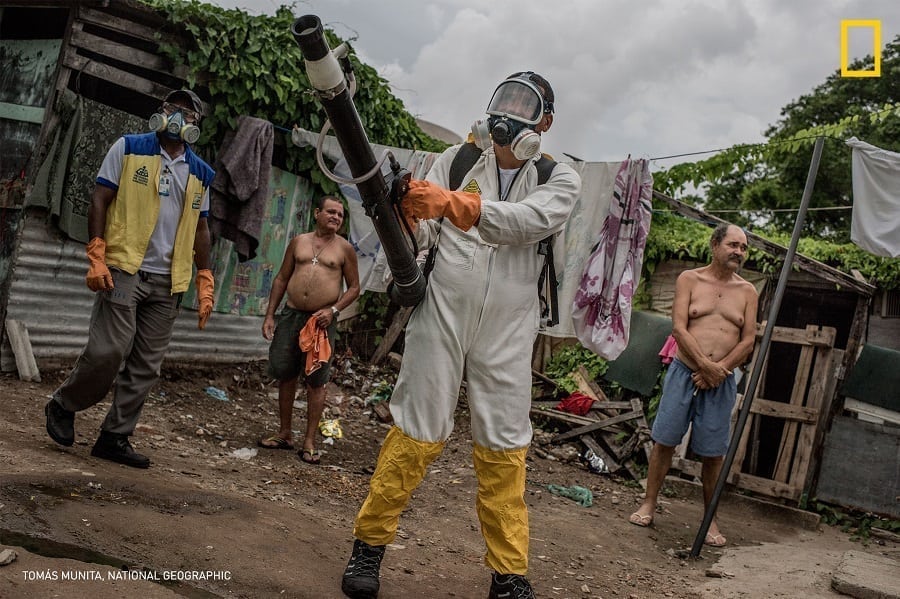Tomás Munita is a Chilean documentary photographer primarily interested in social issues. His work focuses on exploring ritual, culture, and crisis in places such as Latin America, Afghanistan, Pakistan, and India. He is known for his work covering the HIV epidemic, the Kashmir earthquake, conflict in Kabul, the plight of the Rohingya people, and, recently, cowboys in Patagonia and Zika for National Geographic. Munita holds a number of awards, including an ICP Young Photographer Infinity Award in 2005, two World Press Photo awards, the 2006 Leica Oskar Barnack award, the Henri Nannen Preis in 2010, an All Roads photography award from National Geographic in 2010, and a Visa d’Or News award in 2012. Munita’s work regularly appears in major publications such as The New York Times, National Geographic, Geo, Time, Courrier International, and others.


Threatening new viruses emerge abruptly in our modern world, provoking stark headlines and demands for bold government action—but in most cases the origins are complex and go unnoticed as they furtively develop over several years. This holds true for Zika, a mysterious virus spread by disease-carrying mosquitos and sexual contact. Ground zero for Zika’s most recent outburst was the poor, sprawling favelas in northeastern Brazil, where the Aedes aegypti mosquito flourished amid the abundant litter, standing water, clogged drains, and flimsy dwellings commonly found in these vulnerable communities.
Zika’s typical symptoms are relatively unremarkable, often hindering its detection. Its most feared consequence is a condition called microcephaly, in which a baby is born with severe brain malformations that can lead to physical and mental handicaps. Declared a public health emergency in February 2016 by the World Health Organization, Zika’s origins remain unclear, and without a vaccine or tangible control methods to prevent its spread, this resilient virus may not be eradicated any time soon.
Tomás Munita is an independent documentary photographer based in Chile whose main interests are social and environmental issues. This story was a two-part digital feature for National Geographic in February 2016.
Artist Bios
Organizations
-

National Geographic
Representing the largest brand on social media with over 780 million followers and 1.1 billion impressions each month, National Geographic Content’s award-winning and critically acclaimed storytelling inspires fans of all ages to connect with, explore, and care about the world through factual storytelling. National Geographic Content, part of a joint venture between The Walt Disney Company and the National Geographic Society, reaches over 532 million people worldwide in 172 countries and 33 languages as a digital, social, and print publisher and across the global National Geographic channels (National Geographic Channel, Nat Geo WILD, Nat Geo MUNDO), National Geographic Documentary Films, and direct-to-consumer platforms Disney+ and Hulu. Established in 1888, National Geographic is a trusted print and digital publication that creates visually stunning, richly reported photojournalism and distinguished, impartial coverage of the globe’s most pressing issues. Visit nationalgeographic.com and natgeotv.com or explore Instagram, Threads, Facebook, LinkedIn, YouTube, TikTok, and Reddit.
Brazil’s Battle Against Zika
Featuring: Tomás Munita
Curated by: Mallory Benedict
Locations
View Location Details Download a detailed map of this location Brooklyn Bridge Park – Emily Warren Roebling Plaza1 Water St
Brooklyn, NY 11201
This location is part of Brooklyn Bridge Park
Explore other locations and exhibitions nearby

